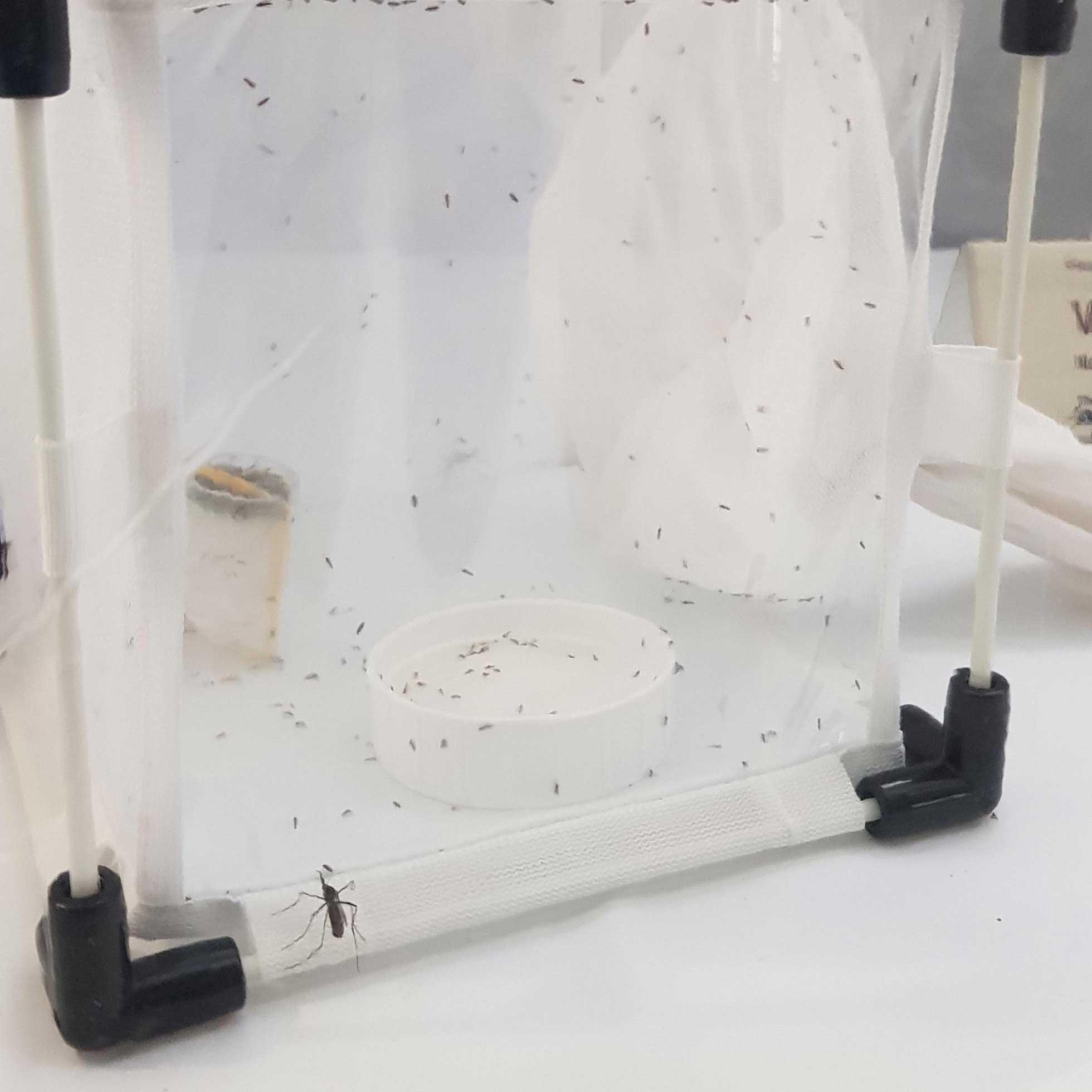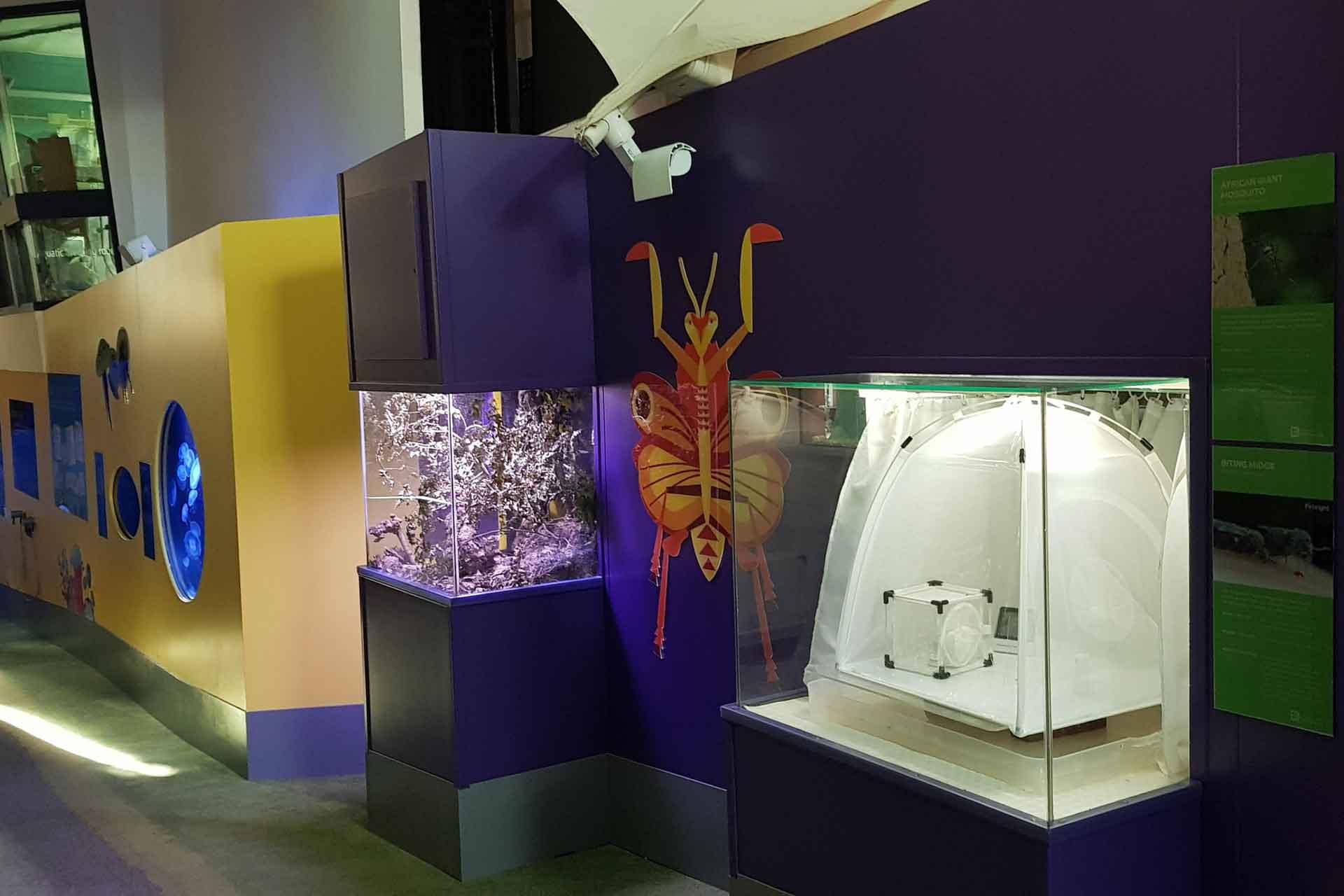Scientists at The Pirbright Institute have worked with the Zoological Society of London (ZSL) London Zoo to showcase the importance of Culicoides biting midges within the Zoo’s revamped ‘Tiny Giants’ exhibit.
The exhibit shines a spotlight on the planet’s smallest animals, where visitors will find more than 160 species of marine, freshwater and terrestrial invertebrates. Among those species are Pirbright’s Culicoides midges – small biting flies that are found in large numbers almost everywhere on Earth. There are about 50 species of Culicoides biting midge in the UK, six of which are known vectors, which means they can spread diseases between susceptible animals such as cattle, sheep and goats.
The midges featured at ZSL London Zoo are a species called Culicoides nubeculosus, which are native to the UK and do not spread any known diseases. They are supplied from Pirbright’s unique Culicoides midge colonies each week by Eric Denison, who has forty years' experience working with midges, mosquitoes and ticks, whilst Dr Marion England, Senior Postdoctoral Scientist in the Transmission Biology group, coordinates the collaboration.

A mosquito resting on the midge enclosurePirbright is one of the few research centres in the UK that rears Culicoides midge colonies, which enables the Institute to study the insects and the diseases that they spread. Pirbright’s Entomology group shares this National Capability with scientists across the globe, providing midges and expertise to advance research into these important vectors. Dr England said:
“Insects such as mosquitoes and midges are often perceived as a nuisance in the UK and they are frequently placed in the same category: annoying flies that give you itchy bites. In the exhibit, our midges are housed in an enclosure with mosquitoes, so this is a great opportunity for the public to see that there is not only a huge size difference between midges and mosquitoes, but that the roles they play in nature also vary hugely, from the diseases that they spread to the locations that they are found.”
Pirbright’s scientists have a long standing relationship with ZSL London Zoo, and continue to collaborate on research that is providing important insights about local midge populations at the Zoo, such as recent studies on the feeding habits of midges on exotic animals. The information collected will also be used to assess the impacts of climate change and urbanisation on midges and aids the understanding of disease risk to the Zoo’s animals.
Paul Pearce-Kelly, Senior Curator of Invertebrates and Fish at ZSL London Zoo said:
“I’m delighted that our new exhibit is able to convey the importance of these insects and our ongoing monitoring collaboration with Pirbright.”
